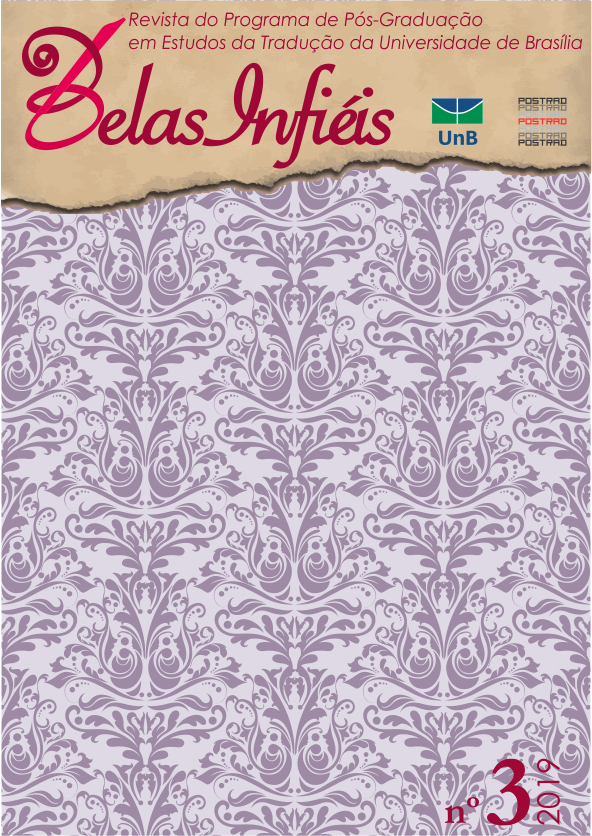The interpretation of children's literature into Brazilian sign language (LIBRAS): body expressiveness in the production of meaning
DOI:
https://doi.org/10.26512/belasinfieis.v8.n3.2019.23082Keywords:
Children's literature. Brazilian Sign Language, Expressiveness. Meaning.Abstract
This research subproject is integrated to the main project nº 6850/2016 ”“ Translation and Interpretation of Brazilian Sign Language (Libras) in the contemporary context: challenges and perspectives ”“ and to the Study and Research Group in Sign Language: Interpretation and Translation (LISIT), developed by professor Dr. Arlene Batista da Silva from the Department of Languages ”‹”‹and Letters (DLL / CCHN) of Ufes (Universidade Federal do Espírito Santo). It is a desk research that focuses on an analysis of the translation of children's literature into Brazilian Sign Language (Libras), focusing on the expressiveness of the body as a meaning-producing element. Anchored in the studies of Hall (1997), Karnopp (2013), Morgado (2011) and Chartier (1990), among others, we intend to describe and interpret the poetic performance present in the literary work "The Adventures of Pinocchio", produced by Editora Arara Azul. In the analysis, we aim to identify the ways in which the translator uses facial and body expressions, classifiers, the gaze, the movement of the shoulders and the embodiment of characters in order to verify whether there is a materialization of the literature of / in the body of the signer through the expressive resources of Brazilian Sign Language (Libras). From the analysis, it was possible to realize that the translator used classifiers, facial / body expressions, movements and imagetic elements abundantly, all in consonance with each other so that the reader (receiver) clearly derives the plot. With these resources, possibilities for the reader to be touched and involved in the story by seeing / reading the performative narrative in the body of the signer are created.
Downloads
Downloads
Published
How to Cite
Issue
Section
License
Given the public access to this journal, the texts are free to use but requires the recognition of the original authorship and initial publication in this journal to be properly stated.
 The journal allows the use of works published for non-commercial purposes, including the right to submit the work to publicly accessible databases. Published contributions are the sole and exclusive responsibility of the author(s).Â



















